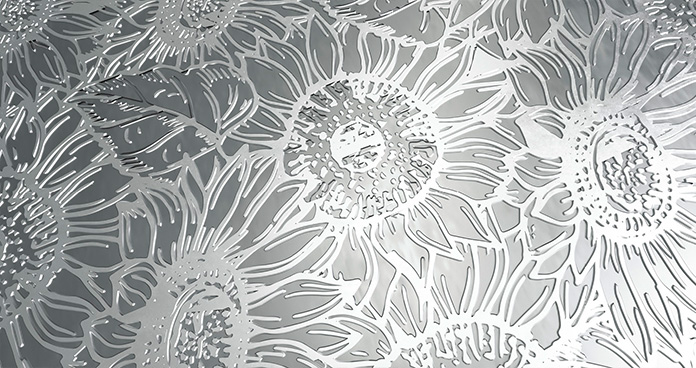
The political framework
At the level of the EU, measures such as the guidelines on energy efficiency and renewable energies, the future design of the electricity market, or the green gas market package have still not been finalized. A similar situation prevails in Austria at the time of writing with respect to topics concerning the implementation of these and other EU requirements.
The introduction of a European carbon border adjustment mechanism (CBAM) in conjunction with a revision of the EU’s emissions trading system (EU ETS) sets the agenda for the steel industry. Consequently, starting in calendar year 2026, the CBAM will initiate an incremental phasing out of the no-cost allocations of emissions trading allowances by calendar year 2034.
The basic principle underlying the CBAM is the idea that importers must either satisfy a CO2 pricing system that corresponds to the EU ETS or pay import tariffs. In a first step, the CBAM concerns the iron, steel, aluminum, cement, electricity, fertilizer, and hydrogen industries as well as select upstream and downstream products. A transition phase leading up to the program’s actual launch in calendar year 2026 should start as early as in the Northern fall of 2023. To date, however, no solutions for exports from the EU have been found. Such exports would serve to offset the EU’s higher climate action standards relative to other regions and thus also create more or less comparable competitive conditions. Nevertheless, the decision now places the affected companies’ planning as to the availability of allowances in the future and the expected cost developments associated with the shift to CO2-reduced technologies on a much more stable footing than has been the case to date.
So far, there is no sign of an integrative and comprehensive approach to a “green” EU-wide industrial policy that addresses the long-term competitiveness of energy-intensive industries and their value chains (e.g., availability and prices of renewables, European hydrogen infrastructure, fiscal and other supportive policies). While the US “Inflation Reduction Act” provides USD 370 billion in investment subsidies driven by strong fiscal supports and incentives for sectors relevant to energy and climate, so far the EU’s “Green Deal Industrial Plan” only contains proposals for two pieces of legislation—the “Net Zero Industry Act” that focuses on the energy system and the “Critical Raw Materials Act” that is aimed at boosting Europe’s domestic supply of strategically important raw materials.
EU Emissions trading
The voestalpine Group’s need to buy additional allowances under the current ETS regime follows from the difference between its overall need for allowances (= amount of emissions) less the allocated no-cost allowances. Just as in previous years on average, in the business year 2022/23 it equated to about one third of its total CO2 emissions. Meanwhile, the allowance price has jumped 17%, from EUR 76 to just under EUR 90. Volatile price developments that continue unabated even caused the price to breach the EUR 100 threshold for a short time in February 2023.
The greentec steel climate action program
In March 2022, the Supervisory Board of voestalpine AG greenlit the preparatory work for climate-friendly steel production at the Group’s plants in Linz and Donawitz (both Austria). This work has been consistently implemented since then. In March 2023, the Supervisory Board fundamentally approved an investment volume of about EUR 1.5 billion for building the two facilities.
The plan is to substitute two electric arc furnaces (EAFs) driven by green power for two coal-based blast furnaces. The EAF uses scrap, liquid pig iron, and hot briquetted iron (HBI), with the mix adjusted to specific quality requirements. voestalpine sources the required HBI primarily from the direct reduction plant in Texas, USA. This plant has been majority-owned by a global steel manufacturer since calendar year 2022, with voestalpine holding a 20% stake as well as secure long-term procurement contracts.
The decisions as to facilities and suppliers will be made before the end of calendar year 2023, construction will start in 2024, and both units will be commissioned in 2027. This will enable the Group to produce 2.5 million tons of CO2-reduced steel per year and thus cut its current emissions at both plants by some 30%. This equates to about 5% of Austria’s current annual CO2 emissions, making greentec steel the country’s largest undertaking with respect to climate action. The modalities of the first implementation step are still contingent on clarification of open funding issues with the Austrian federal government and the upgrade of the electric power grid (a 220 kV transmission line in the country’s core Upper Austria region) slated for the end of calendar year 2026 at the latest.
voestalpine is pursuing a long-term approach comprising several modular technological steps and options in order to manufacture net climate-neutral steel no later than by 2050 as envisioned under the EU’s ETS target. These technological steps and options focus equally on the greatest possible CO2 mitigation effect and on the project’s actual feasibility (e.g., against the backdrop of applicable political and legal parameters, the availability of raw and other input materials as well as green energy and the requisite infrastructure).
Below is an overview of the key elements and milestones of voestalpine’s greentec steel program:
- Reduction in CO2 emissions by 30% from 2027
- Substitution of two coal-based blast furnaces in Linz and Donawitz by one green electricity powered electric arc furnace
- Reduction in CO2 emissions by 50% from 2030
- Substitution of other conventional pig iron production facilities at both plants
- Net zero CO2 emissions by no later than 2050
- Possible options include the use of fossil-free sources of energy—e.g., green hydrogen and bioenergy—and the sequestration (i.e., carbon capture, utilization, and storage (CCUS)) of CO2. The aim is to achieve the greatest possible flexibility, taking the economic feasibility of the net zero strategy into account.
- Hence the final decisions will be made at a later date to coincide with investment cycles and in accordance with then foreseeable requirements.

